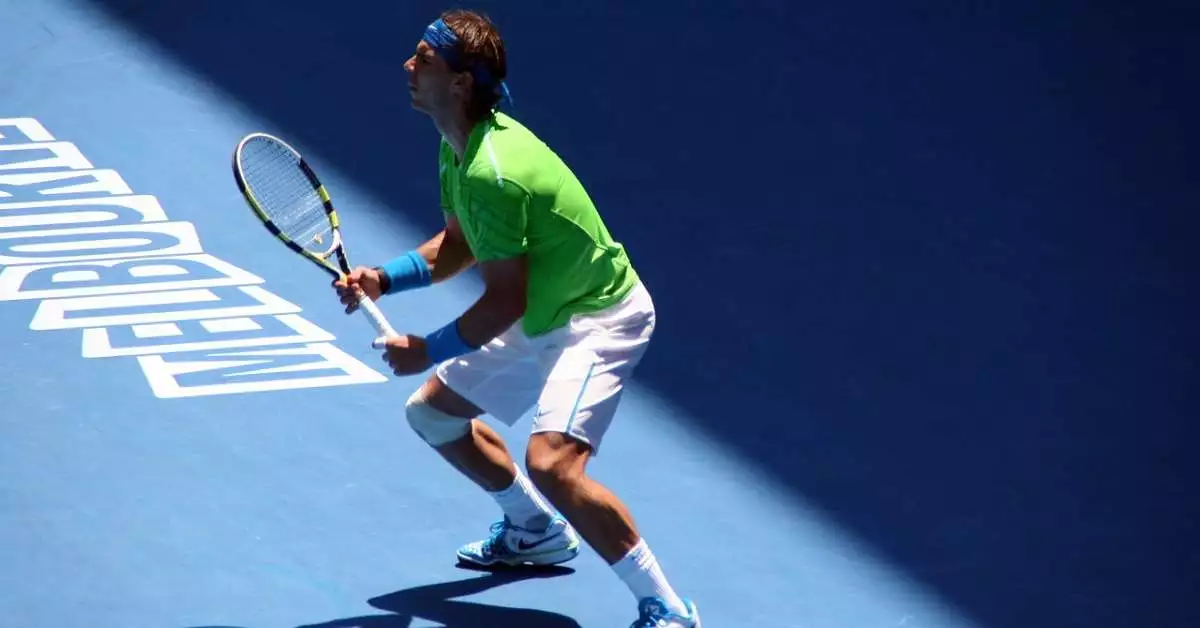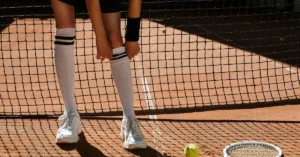Tennis is a sport that has seen some of the most remarkable comebacks in sports history. From being down in the set or match, players have fought back to win against all odds. These comeback games have gone down in tennis history as some of the most memorable moments in the sport.
These tennis comeback games are not only a testament to the skill and determination of the players but also to the unpredictability of the sport. Fans and players alike have witnessed some of the most thrilling moments in tennis history as players have come back from the brink of defeat to snatch victory from their opponents. From Grand Slam finals to Masters 1000-level tournaments, these tennis comeback games have taken place on some of the biggest stages in tennis.
This article will highlight the most impressive comebacks in tennis history, showcasing the players who refused to give up and fought until the very end. Whether you are a tennis fan or not, these comeback games are sure to leave you in awe of the incredible athleticism and mental fortitude of the players who managed to pull off these remarkable feats.
The Concept of a Tennis Comeback
Tennis is a sport that is known for its unpredictability, and one of the most thrilling moments in a tennis match is a comeback. A comeback is when a player who is losing manages to turn the match around and win the game.
In tennis, a comeback can happen at any point during the match. It can occur when a player is down a set, down a break, or even down match point. A comeback can be the result of a player’s skill, determination, and mental toughness. It can also be the result of an opponent’s mistakes or a change in strategy.
A tennis comeback is not just about winning the match; it is also about the emotional rollercoaster that players and fans experience during the match. A comeback can be a source of inspiration and motivation for the player who is losing, and it can also be a source of frustration and disappointment for the player who is winning.
There have been many memorable comebacks in tennis history, and they have become a part of the sport’s lore. Fans remember the matches where players came back from the brink of defeat and won, and they celebrate the players who were able to overcome adversity and triumph.
The Unforgettable 1999 French Open Final
The 1999 French Open final between Andre Agassi and Andrei Medvedev is widely regarded as one of the greatest tennis comebacks of all time. Agassi, who had already won three Grand Slam titles, was the favorite to win the tournament. However, Medvedev, a Ukrainian player who had never won a Grand Slam title before, was determined to upset the odds.
The match started disastrously for Agassi, who lost the first two sets 1-6, 2-6. Medvedev seemed to be in complete control of the match, and it looked like Agassi had no chance of winning. However, Agassi refused to give up and fought back in the third set, winning it 6-4.
Agassi continued to play brilliantly in the fourth set, and he won it 6-3. The momentum had shifted, and it was clear that Agassi had the upper hand. In the fifth set, Agassi played with incredible skill and determination, and he won it 6-4 to claim his first French Open title.
The 1999 French Open final was a remarkable display of skill, determination, and grit from Andre Agassi. It was a true comeback story, and it is still remembered as one of the greatest matches in tennis history.
Federer’s 2019 Wimbledon Triumph
In 2019, Roger Federer won his 21st Grand Slam title at Wimbledon, defeating Novak Djokovic in the semifinals and then overcoming Rafael Nadal in a thrilling four-set final. The victory was Federer’s second Wimbledon triumph in three years and his fifth overall, cementing his status as one of the greatest grass court players of all time.
The final against Nadal was a classic encounter, with both players showing their incredible skill and determination on Centre Court. Federer started strongly, taking the first set 7-6(3) before Nadal hit back to level the match with a 6-1 second set. Federer then regained control, winning the third set 6-3 before holding off a fierce Nadal fightback in the fourth set to clinch the title with a 7-6(5) 1-6 6-3 6-4 victory.
The win was a remarkable comeback for Federer, who had lost to Djokovic in the final of the 2014 and 2015 Wimbledon tournaments, and had been defeated by Kevin Anderson in the quarterfinals of the 2018 event. However, he showed his class and resilience to bounce back and claim his 21st Grand Slam title in 2019.
Federer’s victory at Wimbledon in 2019 was a testament to his skill, determination, and ability to perform at the highest level on the biggest stage. It was a moment of triumph for one of the greatest tennis players of all time, and a reminder of the enduring power of his talent and his legacy in the sport.
Nadal’s 2012 Australian Open Victory
Rafael Nadal’s victory over Novak Djokovic in the 2012 Australian Open final is considered one of the greatest comebacks in tennis history. Nadal was the reigning French Open champion and had won 10 Grand Slam titles prior to the match. Djokovic, on the other hand, was the defending champion and had won three of the previous four Grand Slam events.
The match was a grueling five-set battle that lasted nearly six hours. Nadal lost the first set, won the second, and then dropped the third and fourth sets to fall behind 2-sets-to-1. In the fifth set, Nadal was down 4-2 and facing two break points that would have put him in a 5-2 hole. However, he managed to fight back and win the game to stay in the match.
Nadal then broke Djokovic’s serve to level the score at 4-4, and the two players traded service holds until the score was tied at 5-5. Nadal then broke Djokovic’s serve again to take a 6-5 lead and served out the match to win his second Australian Open title.
The victory was particularly sweet for Nadal, who had lost to Djokovic in seven of their previous nine meetings, including the 2011 Australian Open final. Nadal’s win in the 2012 final was also significant because it marked the first time he had beaten Djokovic in a Grand Slam event since the 2010 US Open.
The 2001 Wimbledon Epic: Ivanisevic Vs Henman
The 2001 Wimbledon Championships were filled with memorable moments, but none more so than the epic semifinal match between Goran Ivanisevic and Tim Henman. The match, which lasted over four hours and was spread over two days due to rain delays, was a true battle of wills between two of the sport’s finest players.
Ivanisevic, who had previously reached three Wimbledon finals but had never won, was a wildcard entry into the tournament. Henman, on the other hand, was a crowd favorite and had reached the semifinals in each of the previous three years. The stage was set for an unforgettable showdown.
The match was a rollercoaster of emotions, with both players trading blows and momentum swinging back and forth. Ivanisevic took the first set, but Henman fought back to take the next two. Ivanisevic then won the fourth set to force a deciding fifth set.
The final set was a tense affair, with neither player able to break the other’s serve. The match went to a tiebreak, and Ivanisevic held his nerve to win it 7-5 and secure his place in the final.
The match was a classic example of the drama and excitement that Wimbledon can provide. Ivanisevic went on to win the tournament, beating Pat Rafter in another five-set thriller in the final. The 2001 Wimbledon Championships will always be remembered for the epic match between Ivanisevic and Henman, a true classic of the sport.
Jimmy Connors’ Unbelievable US Open Run
Jimmy Connors’ incredible run at the 1991 US Open is considered one of the greatest comebacks in tennis history. Connors, who was 39 years old at the time, was ranked No. 174 in the world and had not won a Grand Slam in eight years. However, he defied all odds and made it all the way to the semifinals.
Connors’ journey to the semifinals was filled with dramatic moments. In the fourth round, he faced Aaron Krickstein, who was 15 years his junior and had previously beaten him in a five-set match at the 1989 US Open. In an epic battle that lasted four hours and 41 minutes, Connors saved a match point in the fourth set and eventually won 3-6, 7-6, 1-6, 6-3, 7-6.
In the quarterfinals, Connors faced Paul Haarhuis, who was ranked No. 118 in the world. Despite losing the first set, Connors fought back to win the match 4-6, 7-6, 6-4, 6-2.
Connors’ incredible run came to an end in the semifinals, where he faced Jim Courier, who was ranked No. 4 in the world. Despite losing the first two sets, Connors fought back to win the third set in a tiebreak. However, Courier ultimately won the match 6-3, 6-3, 6-2.
Connors’ run at the 1991 US Open is a testament to his tenacity and skill as a tennis player. It is considered one of the greatest comebacks in tennis history and solidified his legacy as one of the greatest players of all time.
Andy Murray’s Resilience at the Miami Masters
Andy Murray’s comeback at the Miami Masters in 2013 is one of the greatest examples of resilience in tennis history. The British player faced David Ferrer in the final, and after losing the first set, he managed to turn the match around and win his second Miami Masters title.
Murray’s victory was particularly impressive given the circumstances. He had suffered a back injury that forced him to withdraw from the French Open the previous year and had to undergo surgery in September 2013. Many believed that he would never return to his former level of play, but Murray proved them wrong in Miami.
The second set was a turning point for Murray. He fought hard and managed to break Ferrer’s serve twice, winning the set 6-4. In the third set, Murray continued to dominate, breaking Ferrer’s serve twice again and winning the match 2-6, 6-4, 7-6(1).
Murray’s resilience and determination in the face of adversity were remarkable. He refused to give up, even when faced with a difficult opponent and a challenging injury. His victory at the Miami Masters is a testament to his skill, his mental toughness, and his ability to come back from setbacks.
Del Potro’s Grand Slam Comeback at the US Open
Juan Martin del Potro’s comeback at the 2018 US Open was one of the most remarkable in the tournament’s history. After missing most of the 2017 season due to a wrist injury, the Argentinean player entered the tournament as the 3rd seed, but few expected him to make it past the early rounds.
Del Potro faced a tough draw, including matches against Fernando Verdasco, Borna Coric, and John Isner. In the quarterfinals, he faced 11-time Grand Slam champion Rafael Nadal, who was in top form and had not dropped a set in the tournament.
Despite the odds, Del Potro played some of his best tennis and defeated Nadal in a thrilling four-set match, 7-5, 6-7 (7), 4-6, 3-6. Del Potro’s powerful forehand and aggressive playstyle proved too much for Nadal, who struggled to keep up with the Argentinean’s pace.
In the semifinals, Del Potro faced Novak Djokovic, who was also making a comeback after a long injury layoff. The match was a classic, with both players trading blows and momentum shifts throughout. In the end, Del Potro prevailed in another four-set match, 6-7 (5), 6-3, 7-6 (4), 6-2.
Del Potro’s run to the final was a testament to his resilience and determination, and he showed the world that he was back to his best. In the final, he faced defending champion and world No. 1, Rafael Nadal. Despite putting up a valiant effort, Del Potro was unable to overcome Nadal and lost in straight sets, 6-3, 7-6 (4), 6-3.
Although he fell short in the final, Del Potro’s comeback at the US Open was one of the most memorable in recent years. It showed that he was still a force to be reckoned with on the Grand Slam stage and that he had the ability to compete with the best players in the world.
FAQ
What are some of the most memorable tennis comebacks in history?
There have been many memorable comebacks in tennis history, but some of the most notable ones include Andre Agassi’s win against Andrei Medvedev in the 1999 French Open final, where he came back from two sets down to win the match and complete his career Grand Slam. Another memorable comeback was Rafael Nadal’s win against Roger Federer in the 2008 Wimbledon final, where he came back from two sets down and saved two match points to win his first Wimbledon title.
Has any player ever come back from 5-0 down to win a tennis match?
Yes, there have been instances where players have come back from 5-0 down to win a tennis match. One of the most famous examples is Roger Federer’s comeback against Tommy Haas in the 2009 French Open quarterfinals, where he was down 5-0 in the final set but managed to win seven straight games to win the match.
What is considered Rafael Nadal’s greatest comeback in tennis?
Rafael Nadal’s greatest comeback in tennis is widely considered to be his win against Novak Djokovic in the 2013 US Open final. Nadal was down a break in the fifth set and faced a break point at 4-5, but managed to save it and win the match in a thrilling tiebreak. This win gave Nadal his 13th Grand Slam title and solidified his status as one of the greatest tennis players of all time.
What are some of the most inspiring comebacks in tennis history, and what lessons can we learn from them about resilience, determination, and mental toughness? Are there any comebacks that you’ve witnessed or experienced personally on the court that have left a lasting impression on you? Share your thoughts and experiences on the topic in the comments section below.







